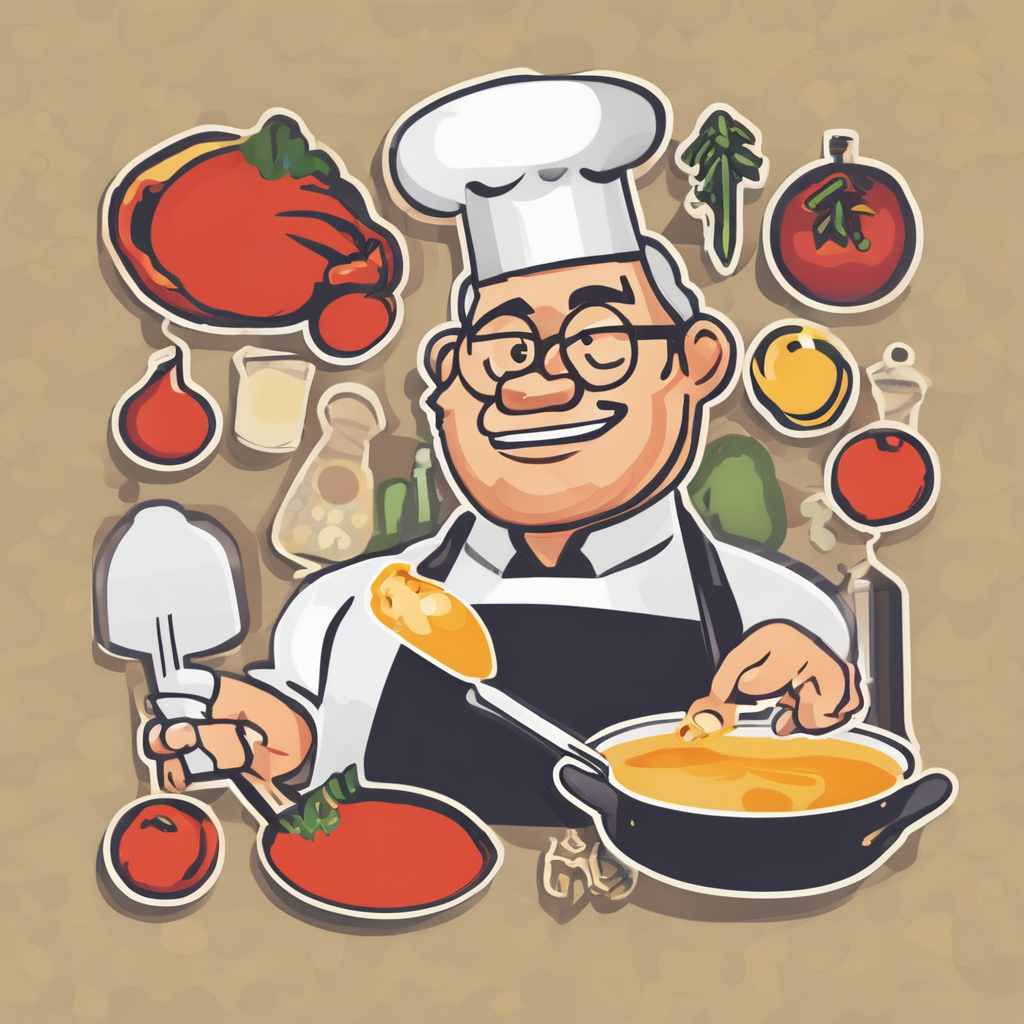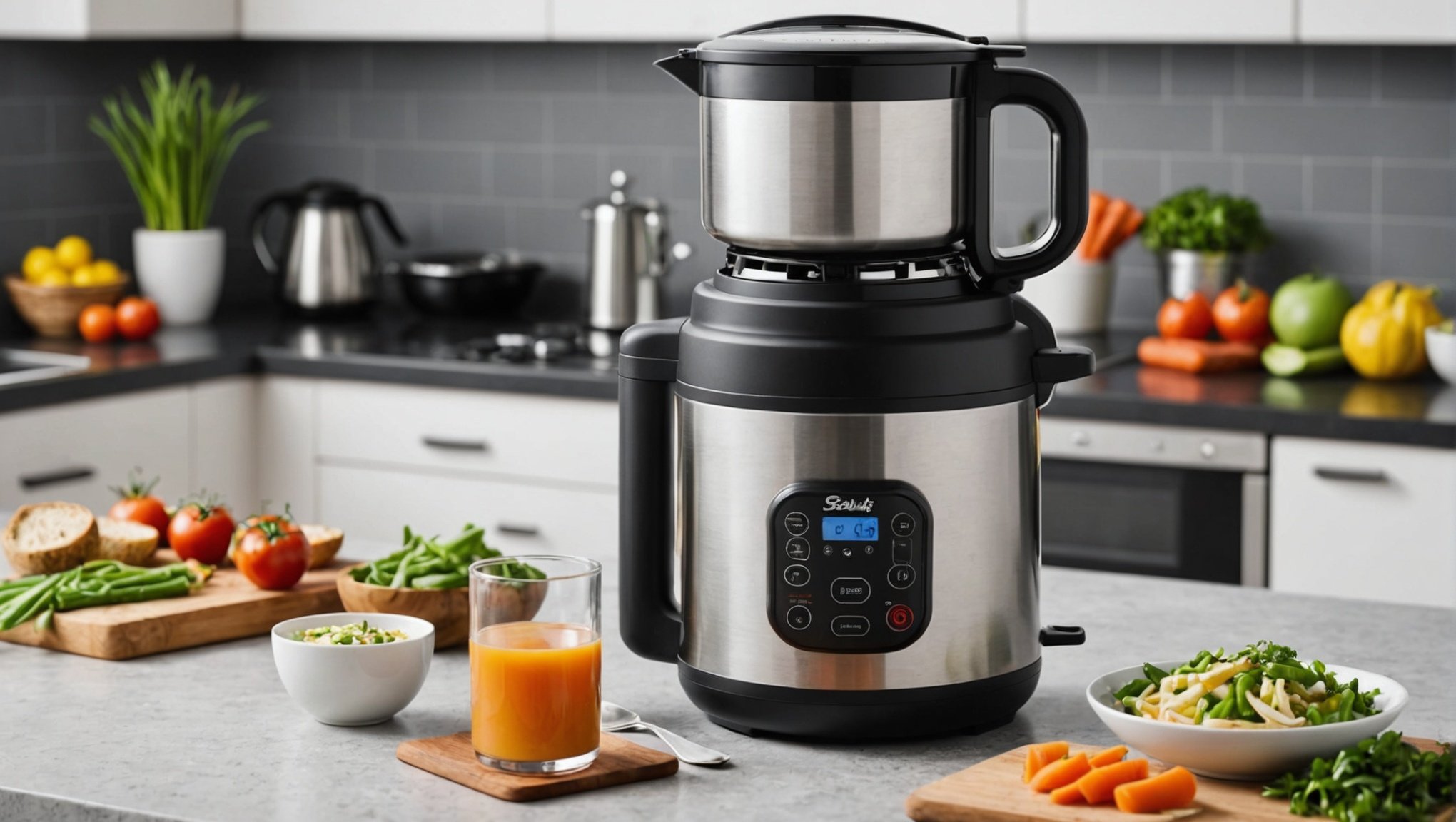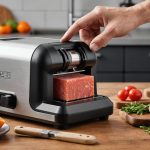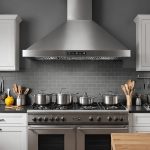Choosing a soup maker in the UK can be overwhelming with so many options available. Key features influence both convenience and the quality of your soups. From blending power and capacity to additional functions like sautéing, each element plays a significant role in your cooking experience. Understanding these features helps you make an informed choice that aligns with your culinary needs. Explore the essential aspects that will elevate your soup-making journey and enhance your kitchen skills.
Key Features of Soup Makers
Explore the essential features that enhance soup-making efficiency.
Also to discover : Brighten Your Compact UK Kitchen: Tips for Harnessing Natural Light
Essential Features
When selecting a soup maker, several essential features can significantly impact your cooking experience. Look for models with versatile functionality that allow for various soup textures, from smooth purees to chunky broths. An integrated blending feature can be a game-changer, ensuring smooth consistency without the need for additional appliances.
Capacity and Serving Size
The capacity of a soup maker is crucial, especially for families or batch cooking. Most models range from 1 to 2 liters. Consider your serving size needs; a larger capacity is ideal for entertaining or meal prep. Smaller households might prefer a compact model to save kitchen space.
This might interest you : Finding the Perfect Fridge Size for Your Growing UK Family: A Comprehensive Guide
Ease of Use
The ease of use is another critical aspect. User-friendly controls and intuitive settings can make a significant difference. Look for a clear user interface, often featuring digital displays or simple dial controls. Some models offer pre-set programs for different soups, which can simplify the cooking process.
Key Features Summary:
- Versatile functionality for various soup textures
- Adequate capacity for your serving size
- User-friendly controls and settings
These features ensure you get the most out of your soup-making experience, making it both efficient and enjoyable.
Capacity and Serving Size Options
Discover the ideal soup maker capacity for your household needs.
Comparing Capacity Options
When choosing a soup maker, understanding the available capacity options is crucial. In the UK market, models typically range from 1 to 2 liters. A 1-liter capacity is suitable for singles or couples, providing just enough for a meal without leftovers. In contrast, a 2-liter model caters well to larger families or those who enjoy meal prep and batch cooking.
Ideal Serving Sizes
Consider your serving size requirements when selecting a soup maker. For a family of four, a 1.6 to 2-liter capacity ensures everyone gets a generous portion. Smaller households might find a 1 to 1.2-liter model more appropriate, reducing waste and saving space.
Considerations for Meal Prep
For enthusiasts of meal prep, a larger capacity soup maker is beneficial. It allows for cooking in bulk, saving time during busy weeks. Additionally, having extra soup on hand is convenient for quick lunches or dinners.
- 1 to 1.2 liters: Ideal for singles or couples
- 1.6 liters: Suitable for small families
- 2 liters: Best for large families or batch cooking
Selecting the right capacity ensures your soup maker meets your household's needs efficiently, enhancing your overall cooking experience.
Blending Options and Performance
Discover the diverse blending capabilities and performance metrics.
Types of Blending Options
Soup makers offer various blending capabilities to cater to different texture preferences. Common options include smooth and chunky settings, allowing you to customize your soup's consistency. Some advanced models even provide variations like pulse or sauté, giving you more control over the final texture.
Performance Metrics
Evaluating a soup maker's performance involves examining its speed, power, and efficiency. A high-power motor can handle tougher ingredients, ensuring a smooth blend. Speed settings allow for quick adjustments, while efficiency impacts energy usage and cooking time. These metrics are crucial for achieving the desired texture customization in your soups.
User Preferences
User preferences for soup texture and consistency vary widely. Some prefer a velvety smoothness, while others enjoy a heartier, chunky broth. Understanding your personal taste can guide your choice of blending options and performance features.
- Smooth: Ideal for creamy soups
- Chunky: Perfect for hearty stews
- Pulse: Offers control for mixed textures
Choosing a soup maker with the right blending capabilities and performance ensures you achieve the perfect soup every time, tailored to your specific preferences.
Cleaning and Maintenance Considerations
Discover how to keep your soup maker in top condition with minimal effort.
Importance of Ease of Cleaning
The ease of cleaning is a vital consideration for any soup maker. Models with removable parts simplify the cleaning process significantly. Dishwasher-safe components are particularly advantageous, reducing manual scrubbing time. Users often prioritize these features to maintain hygiene without hassle.
Maintenance Tips for Longevity
To prolong the lifespan of your soup maker, regular maintenance is essential. Ensure that all removable parts are thoroughly cleaned after each use to prevent residue build-up. Occasionally, check for wear and tear on seals and blades, replacing them as needed. Following these tips can keep your appliance running smoothly for years.
User Experiences and Testimonials
Many users share positive experiences regarding cleaning ease and maintenance. They often highlight the convenience of dishwasher-safe parts and the durability of models with robust design. However, some mention challenges with non-removable components, which can complicate cleaning.
- Removable parts: Simplify cleaning
- Dishwasher safety: Saves time
- Regular maintenance: Extends lifespan
Incorporating these practices into your routine ensures your soup maker remains efficient and user-friendly, enhancing your overall cooking experience.
Price Range and Value Comparison
Examine how soup maker pricing correlates with features and quality.
Overview of Price Ranges
The soup maker pricing in the UK varies widely, accommodating different budgets and preferences. Entry-level models start at around £30, offering basic functionalities suitable for simple soups. Mid-range options, priced between £50 to £100, typically include additional features like multiple blending settings and larger capacities. Premium models, exceeding £100, often provide enhanced durability and advanced technologies.
Features vs. Price
When evaluating soup maker pricing, consider the balance between features and cost. High-end models might offer more sophisticated functionalities, but budget-friendly options can still deliver excellent value. For instance, some affordable models include digital controls and pre-set programs, which enhance usability without a hefty price tag.
Budget-Friendly Recommendations
For those seeking value for money, several brands offer reliable yet economical choices. Brands like Morphy Richards and Tower are known for producing budget-friendly soup makers that do not compromise on quality. These models often include essential features such as adjustable blending settings and user-friendly interfaces.
- Entry-Level: £30-£50
- Mid-Range: £50-£100
- Premium: £100+
Understanding soup maker pricing helps consumers make informed decisions, ensuring they select a model that aligns with their needs and budget constraints.











